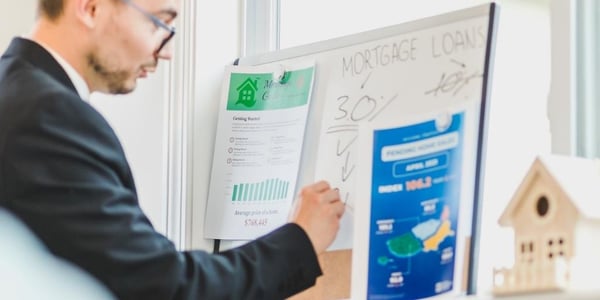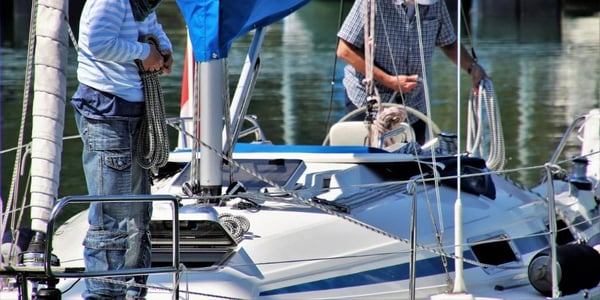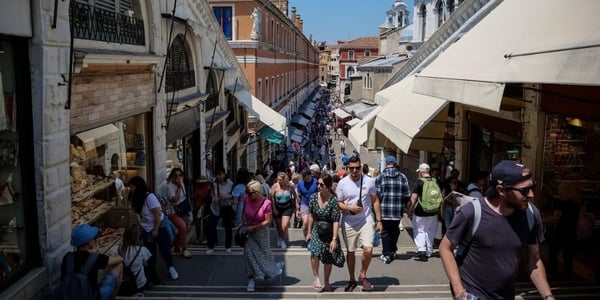As summer fades into fall, trees across the United States transform from lush greens into colorful...


As summer fades into fall, trees across the United States transform from lush greens into colorful...

Many assume a second home means purchasing a house, condominium, or mobile/manufactured home....

A second home can encompass a variety of living arrangements. Whether you're considering a house,...

Europe has long been a dream destination for retirees seeking to explore its rich history, diverse...
Maximizing Fuel Efficiency: Tips for Saving on Gas
Looking to save on gas? This post is dedicated to helping drivers like you find effective ways to lower their fuel expenses. It doesn't matter if you use your car every day for a long commute, are prepping for a long road trip, or only drive occasionally; the rising cost of gas is something we all feel. But, there's light at the end of the tunnel. With a few adjustments to how you drive and how you care for your vehicle, you can start seeing real savings without having to make any big sacrifices. We'll guide you through simple steps and smart habits that can make a big difference at the gas pump.
Follow These 12 Tips to Save on Gas
From simple maintenance practices to mindful driving habits, we'll cover strategies that can lead to significant fuel savings over time. Here are some practical tips for maximizing fuel efficiency and saving on gas:
1. Regular Maintenance
Regular maintenance is the foundation of a fuel-efficient vehicle. Tasks like scheduled tune-ups, timely oil changes, and routine air filter replacements might seem mundane, but they are critical in keeping your engine running smoothly and efficiently. By investing in regular maintenance, you save money on gas and reduce harmful emissions, contributing to cleaner air and a healthier environment.
2. Proper Tire Inflation
It's easy to overlook the importance of proper tire inflation, but it can significantly impact fuel efficiency. Under-inflated tires increase rolling resistance, forcing your engine to work harder and consume more fuel. By regularly checking and maintaining the correct tire pressure, you can improve fuel economy, enhance safety, and prolong the life of your tires—all while reducing your carbon footprint.
3. Smooth Driving
Aggressive driving habits like sudden acceleration, hard braking, and excessive speeding put you and others at risk and also unnecessarily guzzle gas. Instead, adopt a gentler approach to driving by accelerating and braking gradually, maintaining a steady speed, and anticipating traffic flow. By driving smoothly, you save fuel and reduce wear and tear on your vehicle, ultimately saving you money on repairs and maintenance.
4. Reduce Idle Time
Idling your engine consumes fuel without getting you anywhere, making it a wasteful practice. Whether you're waiting at a red light, picking someone up, or stuck in traffic, turning off your engine can help you save gas and reduce emissions. Modern engines are designed to restart quickly and efficiently, so don't hesitate to switch off your engine when you're parked or waiting for extended periods.
5. Plan Efficient Routes
Planning your trips in advance can help you minimize time spent on the road and fuel consumed. Take advantage of GPS navigation systems or smartphone apps to find the most efficient routes with less traffic and fewer stops. Consolidating errands and combining multiple destinations into one trip can further optimize fuel efficiency and reduce unnecessary mileage.
6. Limit Air Conditioning Use
While air conditioning provides comfort on hot days, it also increases fuel consumption, especially at higher speeds. Whenever possible, use your vehicle's ventilation system or open windows to cool down instead of relying on the AC. If you do use the air conditioning, set it to a moderate temperature and avoid running it at full blast to conserve fuel and minimize its impact on your gas mileage.
Click here or the button below to open a Boost Checking Account with Dort Financial Credit Union!
7. Lighten the Loa
Carrying unnecessary items in your vehicle adds extra weight, increasing fuel consumption. Take the time to declutter your car and remove any items you don't need for your journey. Pay special attention to the trunk and interior, as excess weight in these areas can significantly impact fuel efficiency. Additionally, avoid carrying bulky items on the roof, as they can create aerodynamic drag and further reduce fuel economy.
8. Use Cruise Control
Cruise control can be a valuable tool for maintaining a consistent speed on highways and long stretches of road. By eliminating unnecessary fluctuations in speed, cruise control helps optimize fuel efficiency and reduce fatigue during long drives. However, use it responsibly and remain attentive to changing road conditions to ensure safe and efficient driving.
9. Choose the Right Fuel
Using the correct fuel grade recommended for your vehicle is essential for maximizing fuel efficiency. While premium fuels may offer higher octane ratings, they often provide no tangible benefits for most vehicles running on unleaded gas. Using a higher-octane fuel than necessary wastes money and fails to improve performance or fuel economy.
10. Combine Trips
Combining multiple errands and appointments into a single trip can help minimize unnecessary driving and reduce overall mileage. By planning your outings strategically and grouping tasks together, you can save both time and fuel. Whether it's grocery shopping, visiting the gym, or running errands, bundling up your trips is a simple yet effective way to maximize fuel efficiency and minimize environmental impact.
11. Keep Your Tank Half Full
Maintaining your fuel tank at least half full can prevent air from entering the fuel system, introducing moisture and leading to potential issues. Additionally, having a consistently filled tank reduces the risk of running out of gas unexpectedly, sparing you from inefficient driving to find a gas station. Ensure optimal engine performance and fuel efficiency by keeping your tank at least partially fueled.
12. Stick to the Speed Limit
Adhering to posted speed limits promotes safer driving and enhances fuel efficiency. Higher speeds increase aerodynamic drag and fuel consumption, making it more costly to maintain higher speeds over long distances. By driving at or below the speed limit, you can achieve a more consistent and efficient pace, ultimately saving fuel and reducing your carbon footprint.
So, as you continue on your travels, keep these ideas in mind, and watch as your fuel economy improves and your savings grow. Drive smart, save big, and enjoy the journey with a little extra money in your pocket.
Start earning 4% cash back on gas! Click here or the button below to apply for a Visa Signature Credit Card with Dort Financial Credit Union!
Living50+